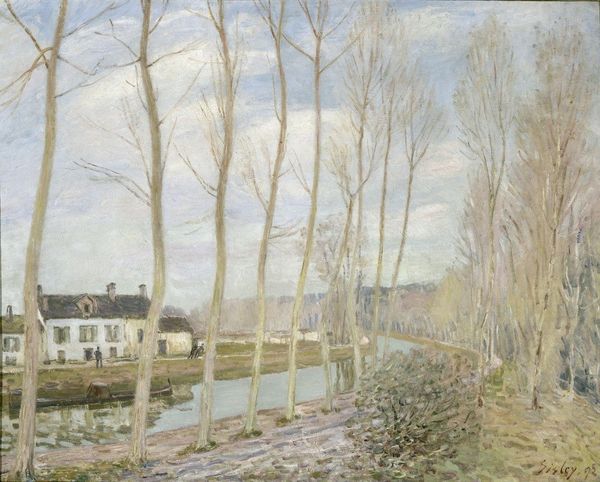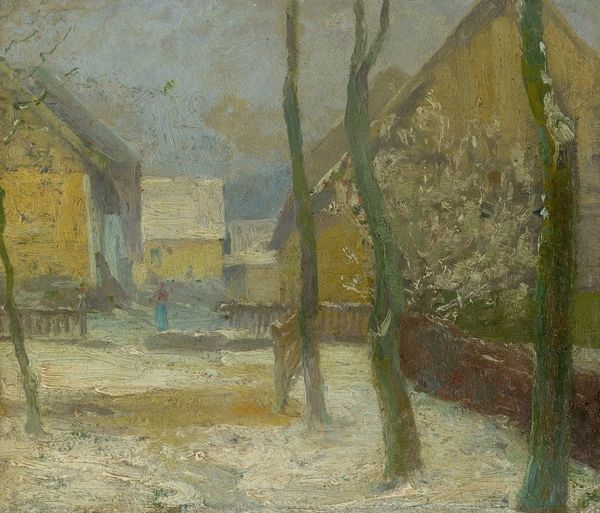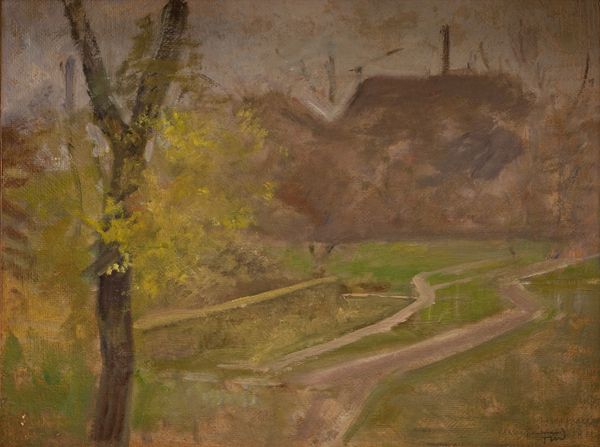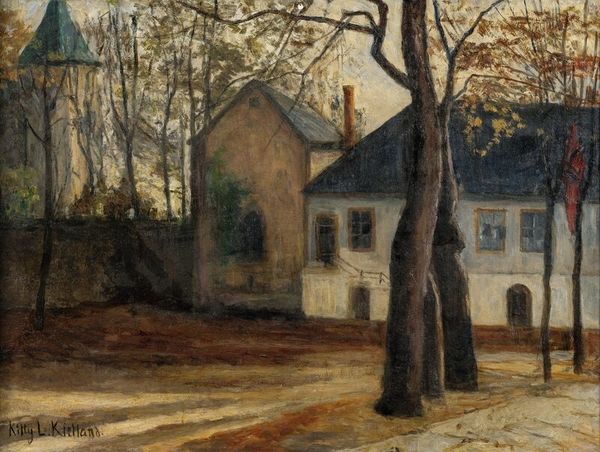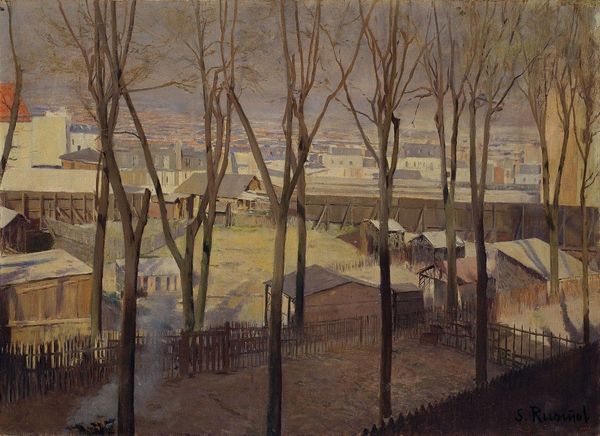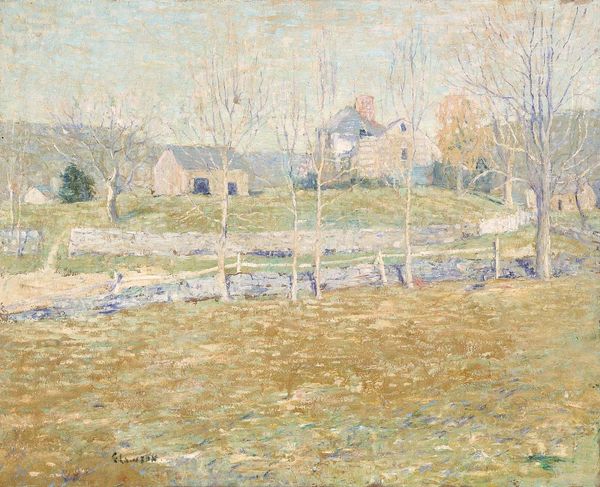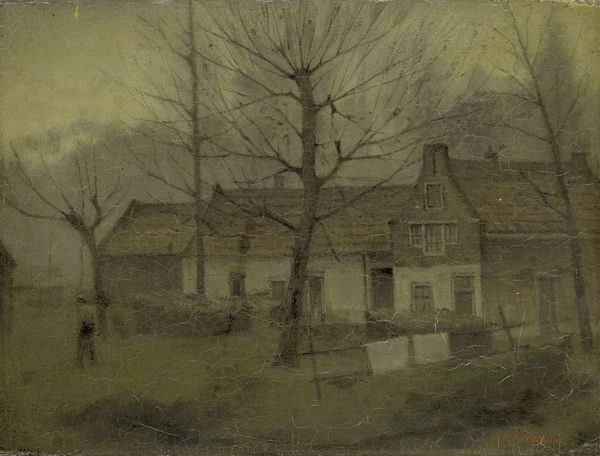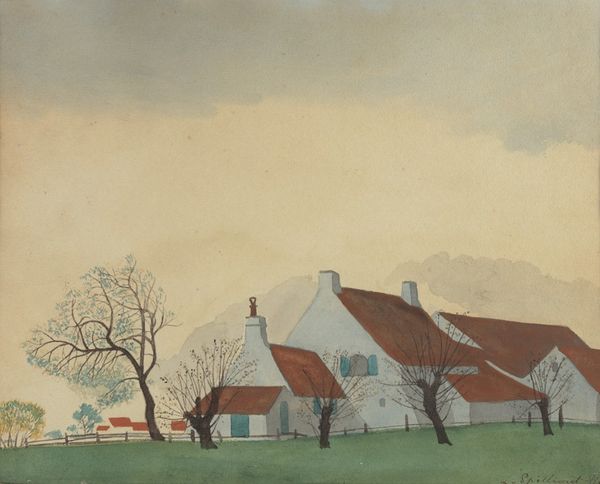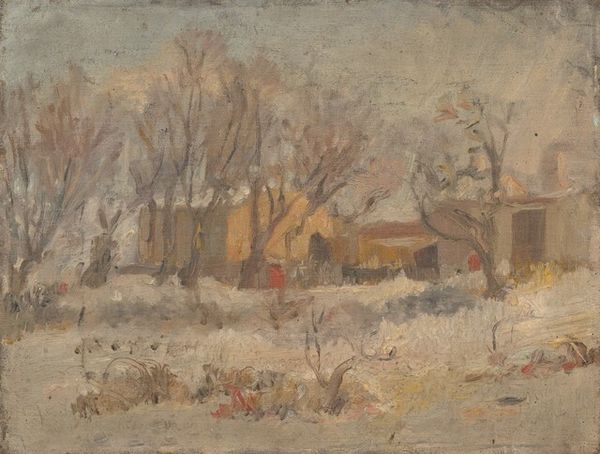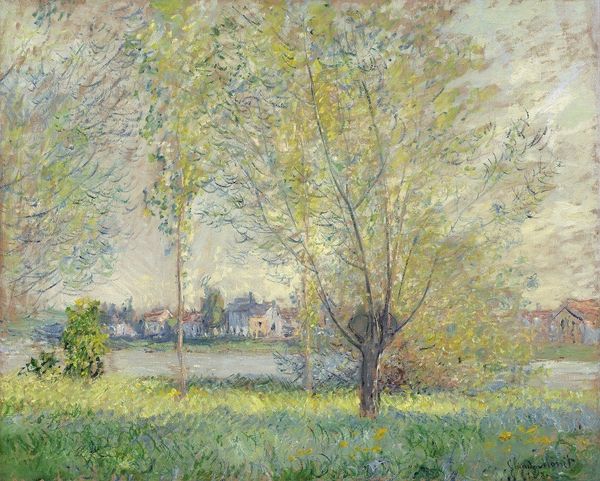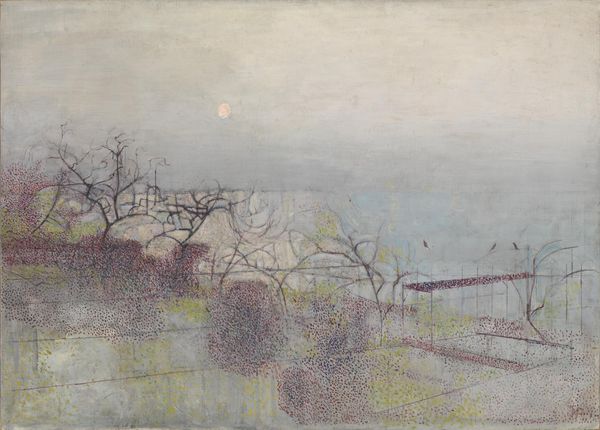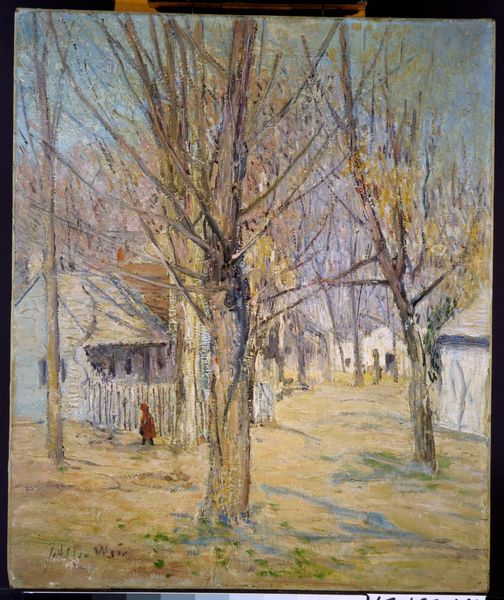
Copyright: Public Domain: Artvee
Editor: This is Ladislav Mednyánszky's "Autumn at the Edge of a City," painted between 1895 and 1900, using oil paint and watercolors. It’s incredibly muted and hazy; I find it somewhat melancholy. What catches your eye? Curator: I see a powerful statement about the economics of artistic production and land usage at the turn of the century. Notice the raw, almost sketch-like quality achieved through the mixed media. What does that tell us about Mednyánszky's relationship to the art market and his own labor? Editor: You're thinking about his efficiency, maybe? That he didn't have the luxury of time or expensive materials? Curator: Precisely! And look at the "edge of the city" itself. Is this romantic landscape merely an aesthetic choice, or does it reflect a critique of industrialization encroaching upon rural life, impacting laborers? Consider how the muted palette could symbolize the drab realities of urban expansion. Editor: So you're suggesting that even in a seemingly idyllic landscape, we can find commentary on the changing social and economic landscape? Curator: Absolutely. The brushstrokes themselves are a record of Mednyánszky's physical labor. His choice to blend oil and watercolor—a kind of "making do"—reflects the material constraints artists faced, the intersection of art and craft, especially outside established artistic hubs. Editor: It’s fascinating to consider the choices he made in terms of material as carrying meaning in themselves, rather than simply being a means to an end. Curator: Indeed. It prompts us to consider the socio-economic realities that shape artistic creation and challenge our assumptions about 'high art' versus the labor of production. Editor: Thanks for sharing that. It certainly gives me a lot to think about!
Comments
No comments
Be the first to comment and join the conversation on the ultimate creative platform.
